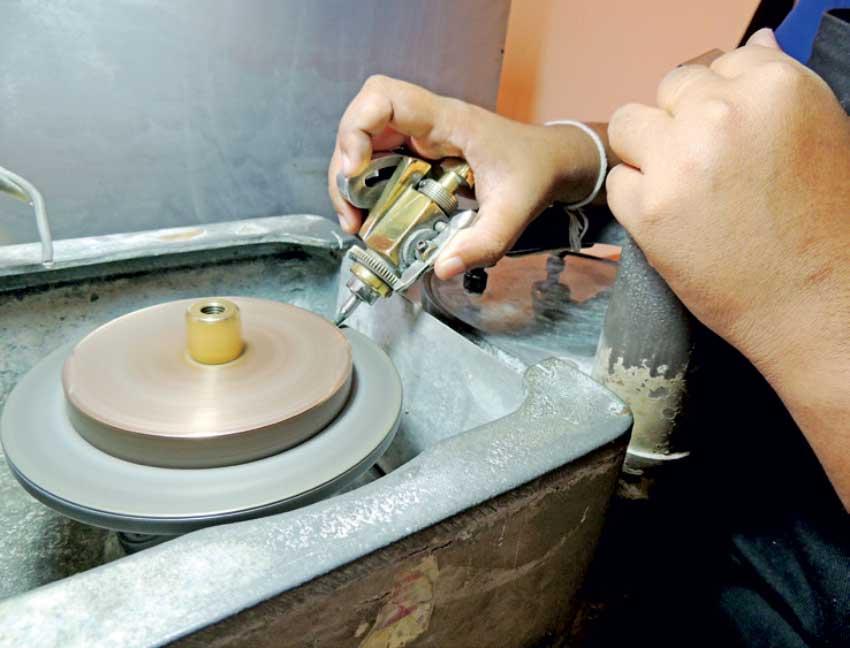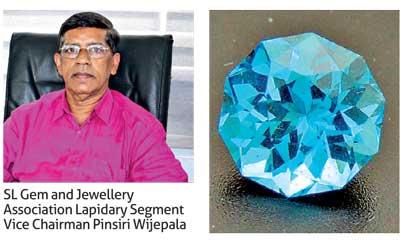30 May 2022 - {{hitsCtrl.values.hits}}

The Sri Lanka lapidary industry is renowned for its high-quality cutting and polishing techniques. Recognised as one of the best cutting centres in the world, the Sri Lanka lapidary industry is home to highly skilled craftsmen, who are talented in retaining the true colour of a stone.
 Sri Lanka has been ahead of the lapidary curve for thousands of years. Its traditional craft of gem cutting is a skill passed on from generation to generation with the industry building a wealth of experience and knowledge of gem cutting.
Sri Lanka has been ahead of the lapidary curve for thousands of years. Its traditional craft of gem cutting is a skill passed on from generation to generation with the industry building a wealth of experience and knowledge of gem cutting.
Gems have been a significant part of Sri Lankan history for over thousands of years with the skill of gem cutting dating back centuries. The beauty and skill of cutting stones in Sri Lanka remain in the traditional handmade techniques used.
The ‘Hanapoorowa’, a traditional gem cutting machine, is a hand-driven tool that is used to perfectly shape the stone. Since its humble and creative beginnings, the lapidary industry has advanced greatly. The increase in international demand has required the industry to change up from the traditional method of gem cutting to a more large-scale process with the introduction of more high-tech machinery.
Through precision cutting, traditional knowledge and expertise combined with modern technology and innovation to produce a combination of faceting techniques. The lapidary industry holds extremely high standards that meet international market standards, making its precision cutting techniques sought after in the international luxury watch industry. Luxury watches adorning Sri Lankan gems are a steadily growing sector, due to the intricate and precise skills of the lapidary industry.
The lapidary industry now consists of multiple segments from cutting and polishing to colour enhancements. As a result, the industry has opened many job opportunities for the local market. Colour enhancements have become a popular requirement in many international markets and have increased the popularity and growth of the industry further.
Sri Lanka has remained one of the highly picked destinations for gem cutting by international producers, due to the technique of cutting stones in a perfect shape with even facets. The exquisite skills developed by our craftsman have made Sri Lankan gemstones stand out the world over.
Although the industry has many strengths, it is also faced with numerous issues, starting with the fact that Sri Lanka doesn’t export gems to their full potential. Over the years, the increase in demand for gem cutting has created a shortfall in trained labour, making it hard for the industry to keep up with the production demands it faces. Additionally, the infrastructure developed and finance provided to the industry are significantly low, resulting in a lack of technology and high-tech machinery available for production.
“As an industry, our focus is to build Sri Lanka’s standing in the global gem cutting industry as a leader in gem cutting and other services,” said Sri Lanka Gem and Jewellery Association (SLGJA) Lapidary Segment Vice Chairman Pinsiri Wijepala.
To strengthen the industry further, it has to counter a few issues they face currently. The industry plans to simplify the process of moving gemstones in and out of the country for both exporters and importers, thus helping to steadily grow the industry. One of the key issues faced is the lack of modern equipment available in the industry, therefore, the lapidary segment aims to build the industry infrastructure by enhancing the lapidary equipment and technology available. A significant part of keeping the lapidary industry alive is encouraging young talent to join the segment by popularising the skill of being a lapidarist within the workforce and among school leavers in Sri Lanka.
The SLGJA is working tirelessly towards increasing the cooperation between the private and government sectors, thus far it has made great strides with government organisations such as the National Gem and Jewellery Authority (NGJA), Gem and Jewellery Research and Training Institute (GJRTI), Vocational Training Authority (VTA), Export Development Board (EDB) and the Industries Ministry to help build the Sri Lankan lapidary industry as a major competitor in the global market, which as a result, will contribute to uplifting the Sri Lankan economy. The SLGJA believes that there is a huge market yet to be captured and it hopes to build a national body that will help Sri Lanka’s lapidary industry grow into being a leader in global markets.
09 Nov 2024 1 hours ago
09 Nov 2024 3 hours ago
09 Nov 2024 5 hours ago
09 Nov 2024 6 hours ago
09 Nov 2024 7 hours ago